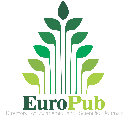(Desti)nation branding and image repair strategies in Mexico. A qualitative case study of Visit Mexico’s official Instagram posts
DOI:
https://doi.org/10.51302/marketing.2024.19679Keywords:
(desti)nation branding, image repair, crisis communication, recovery marketing, Mexico, qualitative case study, thematic content analysisAbstract
This study analyses the use of image repair strategies and destination marketing techniques in online touristic promotional materials (Instagram posts) from Mexico, a long-standing popular destination which reputation was damaged by crime-related crises. To gain a positive (desti)nation image and a competitive edge in a globalised world, nations employ (desti)nation branding strategies to differentiate themselves. Crisis communication techniques, like Benoit’s (1997) Image Restoration Strategies and Coombs’ (2007) Situational Crisis Communication Theory can be used in the case of a negative image. Previous research also developed frameworks aimed at recovery marketing in a context of (desti)nation branding, like Avraham and Ketter’s (2008a) Source-Audience-Message strategies and Walters and Mair’s (2012) Tourism Disaster Recovery Messages. This research investigates image repair strategies used in Mexico’s promotional content, their combinations, and variations in English and Spanish corpora. A qualitative case study of 27 English and 43 Spanish posts in NVivo used grounded theory and iterative coding informed by prior research and our data. Results show strategies from destination branding-related frameworks were found most often. The English corpus emphasised a feeling of proximity with its target audience, while the Spanish-language content showed a wider variety of strategies due to its diversity. These results are useful for researchers and place marketers, highlighting the importance of using relevant strategies and understanding the target audience. Additionally, as a theoretical contribution to this field of study, we propose a new integrated framework for destination branding research.
Downloads
References
About NVivo. (n.d.). About NVivo. https://help-nv.qsrinternational.com/20/win/Content/about-nvivo/about-nvivo.htm
Andreas Böhm. (2005). Theoretical Coding: Text Analysis in Grounded Theory. In U. Flick, von Kardorff, and I. Steinke (Eds.), A companion to qualitative research. Sage.
Anholt, S. (2007). What is Competitive Identity? In S. Anholt (Ed.), Competitive Identity: The New Brand Management for Nations, Cities and Regions (pp. 1-23). Palgrave Macmillan UK. https://doi.org/10.1057/9780230627727_1
Anholt, S. (2011). Beyond the Nation Brand: The Role of Image and Identity in International Relations. Exchange: The Journal of Public Diplomacy, 2(1), 1-7.
Anholt, S. (2012). Mito y realidad: La imagen internacional de México. Revista Mexicana de Política Exterior, 96, Article 96.
Anholt, S. (2016). Places Identity, Image and Reputation. Palgrave Macmillan.
Avraham, E. (2015). Destination image repair during crisis: Attracting tourism during the Arab Spring uprisings. Tourism Management, 47, 224-232. https://doi.org/10.1016/j.tourman.2014.10.003
Avraham, E. (2020). Nation branding and marketing strategies for combatting tourism crises and stereotypes toward destinations. Journal of Business Research, 116, 711-720. https://doi.org/10.1016/j.jbusres.2018.02.036
Avraham, E., and Ketter, E. (2008a). Media Strategies for Marketing Places in Crisis. Routledge. https://doi.org/10.4324/9780080557076
Avraham, E., and Ketter, E. (2008b). Will we be safe there? Analysing strategies for altering unsafe place images. Place Branding and Public Diplomacy, 4(3), 196-204. https://doi.org/10.1057/pb.2008.10
Baker, M. J., and Cameron, E. (2008). Critical Success Factors in Destination Marketing. Tourism and Hospitality Research, 8(2), 79-97. https://doi.org/10.1057/thr.2008.9
Benoit, W. L. (1997). Image repair discourse and crisis communication. Public Relations Review, 23(2), 177-186. https://doi.org/10.1016/S0363-8111(97)90023-0
Blain, C., Levy, S. E., and Ritchie, J. R. B. (2005). Destination Branding: Insights and Practices from Destination Management Organizations. Journal of Travel Research, 4(43), 328-338. https://doi.org/10.1177/0047287505274646
Coombs, W. T. (2007). Protecting Organization Reputations During a Crisis: The Development and Application of Situational Crisis Communication Theory. Corporate Reputation Review, 10(3), 163-176. https://doi.org/10.1057/palgrave.crr.1550049
Denscombe, M. (2010). The good research guide: For small-scale social research projects. (4.ª ed.). Open University Press.
Dinnie, K., Melewar, T. C., Seidenfuss, K.-U., and Musa, G. (2010). Nation branding and integrated marketing communications: An ASEAN perspective. International Marketing Review, 27(4), 388-403. https://doi.org/10.1108/02651331011058572
Ely, P. A. (2013). Selling Mexico: Marketing and tourism values. Tourism Management Perspectives, 8, 80-89. https://doi.org/10.1016/j.tmp.2013.07.003
Fan, Y. (2006). Branding the nation: What is being branded? Journal of Vacation Marketing, 12(1), 5-14. https://doi.org/10.1177/1356766706056633
Fan, Y. (2009). Branding the nation: Towards a better understanding [Working paper]. http://bura.brunel.ac.uk/handle/2438/3496
Gallarza, M. G., Saura, I. G., and García, H. C. (2002). Destination image: Towards a Conceptual Framework. Annals of Tourism Research, 29(1), 56-78. https://doi.org/10.1016/S0160-7383(01)00031-7
Giannopoulos, A., Piha, P. L., and Avlonitis, G. (2011). Desti-Nation Branding”: What for? From the notions of tourism and nation branding to an integrated framework. 11. https://www.semanticscholar.org/paper/Desti%E2%80%93Nation-Branding%E2%80%9D%3A-what-for-From-the-notions-Giannopoulos-Piha/a1374ebcb59470d0acd3803c7bc15fac9d9b802f
Kotler, P., and Gertner, D. (2002). Country as brand, product, and beyond: A place marketing and brand management perspective. Journal of Brand Management, 9(4), 249-261. https://doi.org/10.1057/palgrave.bm.2540076
Risen, C. (2005). Re-branding America. The Boston Globe, 1.
Rol, S., and Sert, A. N. (2023). The Role of Official Websites in Destination Branding: A Systematic Literature Review. Journal of Management and Economic Studies, 5(2), 113-135. http://doi.org/10.26677/TR1010.2023.1310
Ruiz Real, J. L., Uribe Toril, J., and Gázquez Abad, J. C. (2020). Destination branding: Opportunities and new challenges. Journal of Destination Marketing and Management 17, 1-13, https://doi.org/10.1016/j.jdmm.2020.100453
Saldaña, J., and Omasta, M. (2022). Qualitative research: Analyzing life. (2.ª ed.). Sage.
Sotiriadis, M. (2021). Tourism Destination Marketing: Academic Knowledge. Encyclopedia 1(1), 42-56. https://doi.org/10.3390/encyclopedia1010007
Vasile, I. B. (2019). Challenges of Contemporary Diplomacy for Mexico. The Fletcher Forum of World Affairs, 43(1), 63-81.
Walters, G., and Mair, J. (2012). The Effectiveness of Post-Disaster Recovery Marketing Messages - The Case of the 2009 Australian Bushfires. Journal of Travel and Tourism Marketing, 29(1), 87-103. https://doi.org/10.1080/10548408.2012.638565
Downloads
Published
How to Cite
Issue
Section
License
Copyright (c) 2024 Kim Van der Zwalmen, Cristina Homsi, Lieve Vangehuchten

This work is licensed under a Creative Commons Attribution-NonCommercial-NoDerivatives 4.0 International License.





















